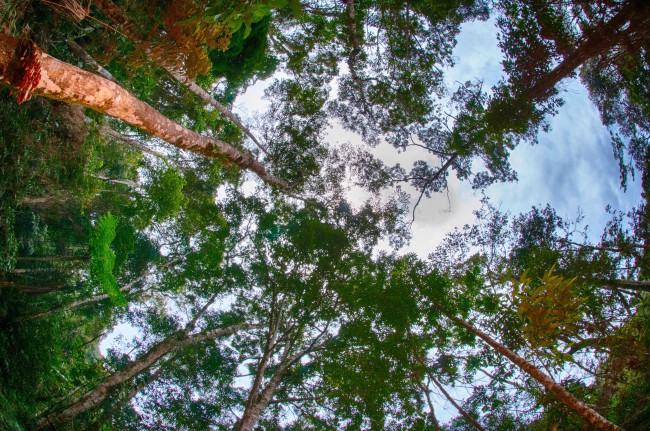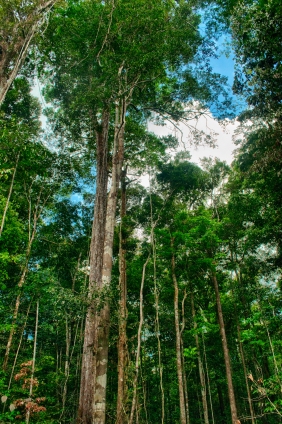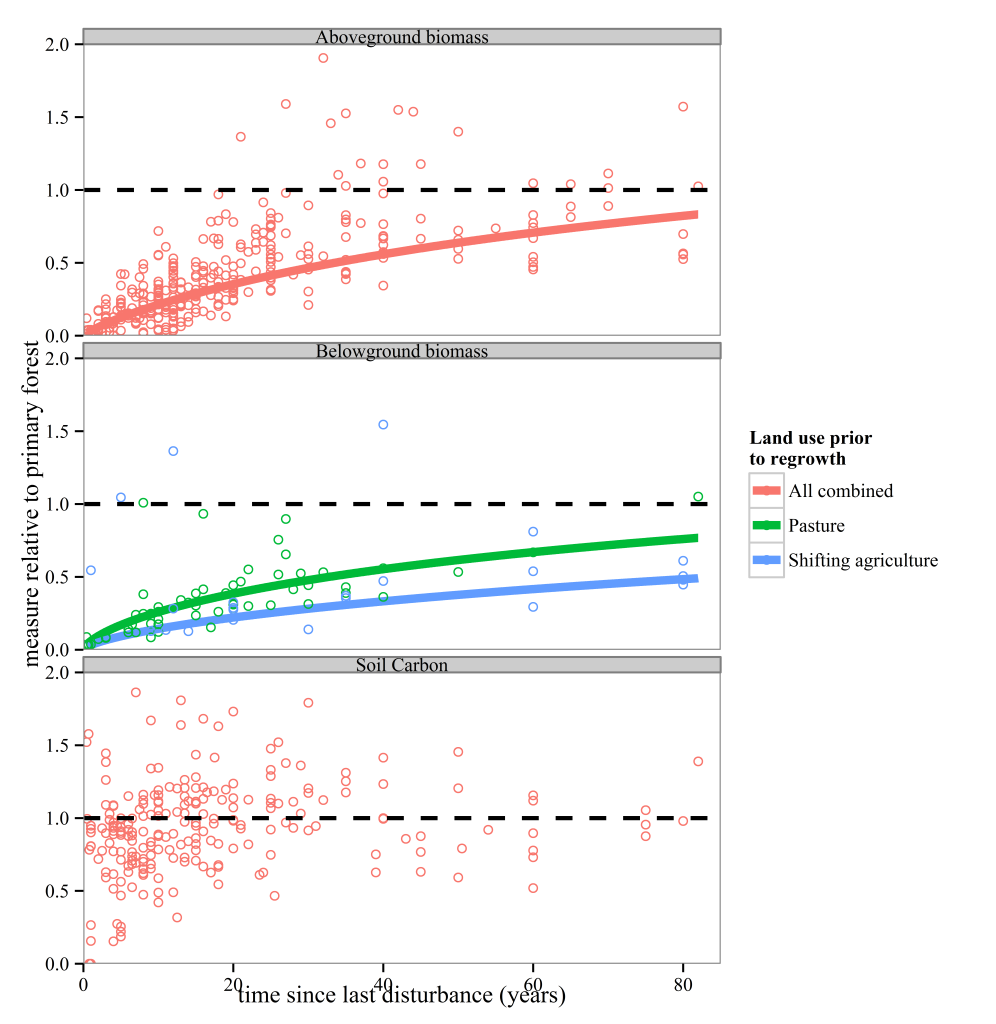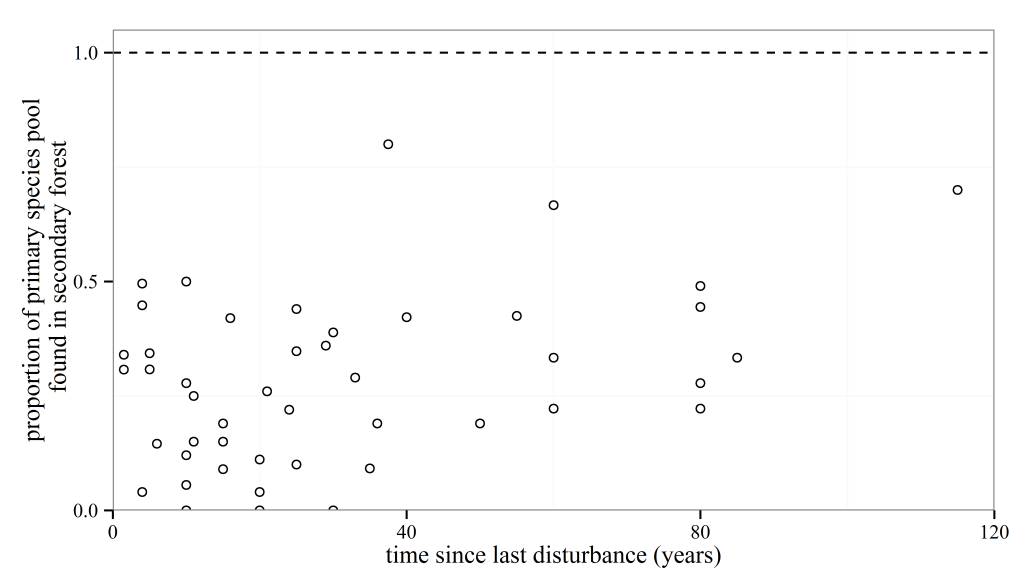
Today our work on the recovery of secondary tropical forests got published in Royal Society Proceedings B. I’m really chuffed with this piece of work and in this blog I’m going to summarise what we found out and why I think it’s important. If you want to read the paper you can get it here.
Large areas of tropical forest have been cleared for agriculture over the last 100 years.
Why does this matter? Well it matters because these forests are vital for the unique biodiversity in the tropics but also because humans can benefit from them remaining intact.
Their loss causes extinction, release of carbon into the atmosphere – worsening climate change, and changes the ecosystem services we get from these forests.
Because of the importance of these forests their restoration is seen as a priority by some. There are valiant attempts to restore tropical forests in Brazil and various Central American countries. In addition there are also international initiatives that aim to encourage the restoration of carbon and biodiversity (E.g. CBD & REDD+). These are great and ambitious aims but, until now, we didn’t really know how long these recoveries took, or whether recovery was different for different disturbance and forest types.
To solve all this we collected the biggest dataset yet compiled on recovery of aboveground, belowground and soil carbon as well as plant species richness and community composition following agricultural clearance. All this data came from previous studies.
We found that after about 80 years aboveground carbon storage was around 85% of that found in undisturbed forests, while belowground carbon storage seemed to recover more slowly. Soil carbon showed no relationship with time since clearance.
In terms of biodiversity both tree and epiphyte species richness seemed to increase over time, with tree richness recovering after around 50 years since disturbance but epiphytes took around 100 years.
However, when we looked at species that are found in the undisturbed forests, relatively few of them are found in the recovering forests. They didn’t seem to accumulate over time either. Given that these species are likely to be more prone to extinction it is worrying that they don’t seem to be doing very well in secondary forests.
We think that carbon recovers relatively well following abandonment of land since there tends to be a rapid influx of woody species. However, we also think that complete recovery of carbon is likely to take more than a century since this is likely to be dependent upon large, slow-growing trees.
Differences between tree species richness recovery and that of epiphytes is likely to be because tree seeds are more easily transported between forests than those of epiphytes. Also epiphytes seem to be found more on big trees, and there don’t tend to be many of these in secondary forests.
The lack of recovery of species found in undisturbed forests is perhaps the most disturbing thing that we found. We think that to improve this situation there may be a need for management of these forests by planting trees and helping to increase dispersal of seeds throughout the non-forest areas.

There’s been lots of great work recently on the value of disturbed forests. We hope our work goes into a bit more detail where the soon-to-be-classic work of Luke Gibson etl al left off which showed that primary forest has greater conservation value than any types of disturbed forest in the tropics. We agree with this, particularly for specialist species. However, most tropical forests are not primary forests and have been logged, cut down or burnt at some point in recent history. Because of this we think that older secondary forests need to be recognised as important for conservation and carbon storage and their clearance should be avoided. These forests are not worthless.




